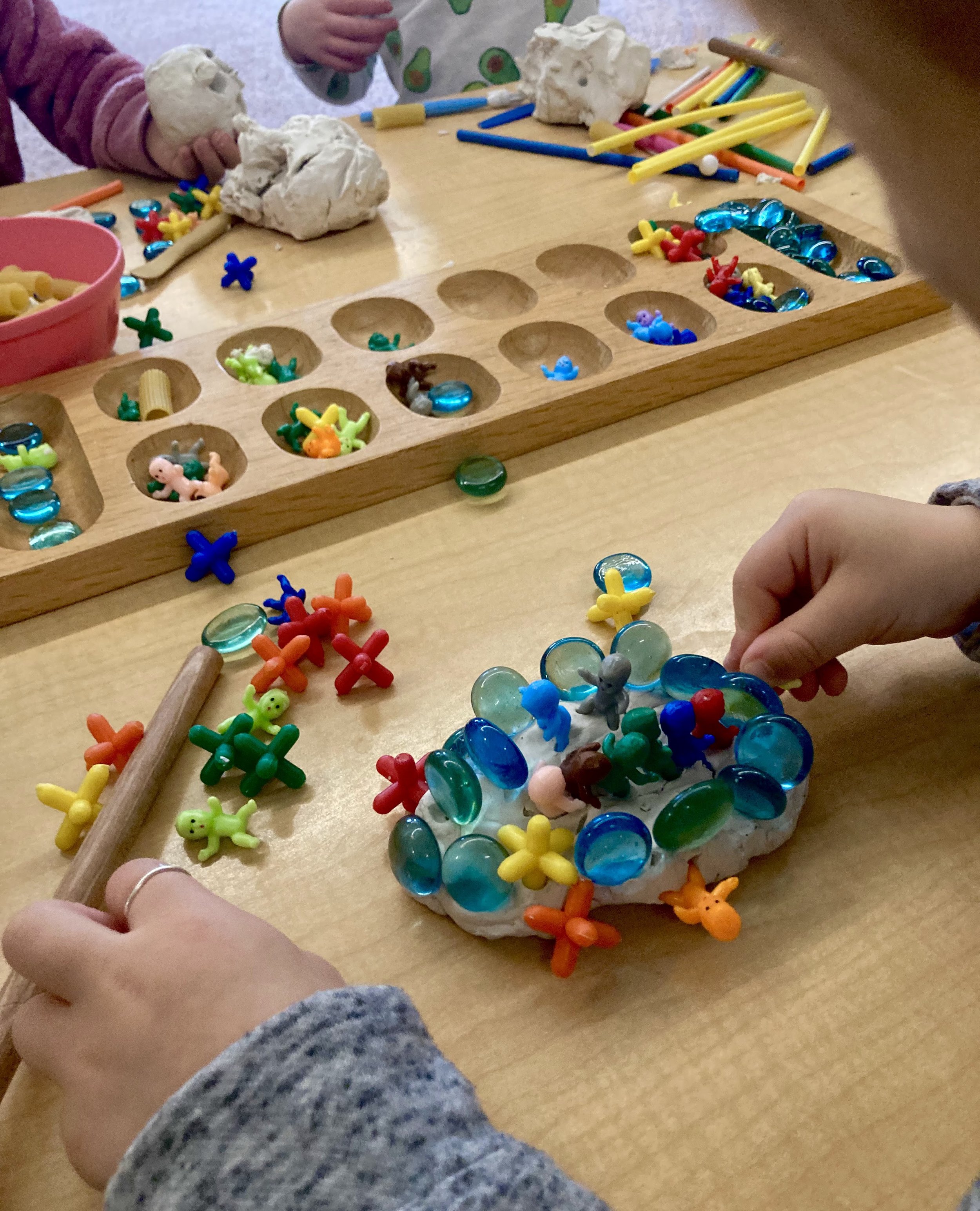Wondering About Outer Space in the Puzzle Primes (3 year-olds)
In our preschool classroom, we adhere to an emergent curriculum approach that pivots our teaching strategies based on the evolving interests of our students. Recently, we observed a collective fascination with outer space among the children, prompting us to integrate this theme into our curriculum organically.
The introduction and exploration of curriculum follow a collaborative and interactive process. We kick off a new theme, like outer space, by engaging the children in discussions that stimulate their curiosity. Questions like "What do you wonder about outer space?" and "What do you know about outer space?" open up avenues for the children to express their thoughts, share their existing knowledge, and spark their interest in the upcoming exploration.
“3 Astronauts” by Helen
What do you wonder about outer space?
Malcolm: Why do you need a spacesuit to go into outer space?
Helen: Why do astronauts wear space helmets, space boots, and space gloves?
Helen: Why do astronauts do science in outer space?
Rohman: I wonder how astronauts can jump really high.
Nora: How do astronauts “blast off?”
Kestrel: Why do fireballs fall out of outer space sometimes?
Helen: Why do astronauts do SO much in outer space?
Kestrel: How do astronauts know if they’re sick or healthy?
Nora: How do astronauts get up to space if they’re driving in a spaceship?
Kestrel: Why is there only a robot on Mars, and no people?
Nora: How do the planets get into the nighttime sky?
Rohman: How come only space ships go into space?
Helen: Is the sun the hottest star?
What do you know about outer space?
Helen: They only send proper clean spaceships into space. Not partly dirty, not all the way dirty. It would get stuff on the science.
Nora: There’s an astronaut space station!
Neff: It has meteors that destroy ships.
Enzo: Venus you can never go to because it has volcanoes exploding around it even today.
Kestrel: The Milky Way is some white in the sky and that formed with planets and star galaxies.
Nora: The stars and the moon are the planets in the galaxy.
Kestrel: Planets in space can form into earths.
Enzo: Satellites take pictures of the planets so the astronauts know the planets are dangerous. And then the astronauts know not to go there.. But what if the outer space floats them to that planet?
Enzo: A crater is a big hole in the ground from a asteroid.
The books we’ve been reading together have brought so much to our exploration of outer space. After reading Solar System by Anne Jankéliowitch, the Puzzle Primes began to integrate celestial features- such as the volcanoes on Mars and Venus, and the storms of Jupiter- into their dramatic play and art.
Malcolm draws the Great Red Spot on Jupiter
The concept of time and distance has emerged organically from our readings about space, prompting conversations about the vastness of the universe. Astronauts have also captured the imaginations of the Puzzle Primes. We've delved into the experiences of real-life astronauts, including Mae Jemison, the first black woman to venture into space. Through reading books such as Mae Among the Stars by Roda Ahmed, we’ve gotten to engage in meaningful discussions about diversity and representation in the realm of space exploration.
It’s been exciting to see how the Puzzle Primes engage with these concepts through their art making. Drawing, painting, and clay activities have become a medium through which the children synthesize their factual understanding of outer space with imaginative elements.
“What does outer space look like?” The Puzzle Primes worked together on an outer space mural, drawing with tempera sticks on black poster board.
Nora: This is the one that has the rings… it’s the whole solar system!
Rohman: You know, I drew planet earth with a ring around it.
Enzo: These are the two Icy Sisters. That one is earth with two icy monsters. These astronauts are so excited to go to the planet Venus the Fiery Goddess.
Frances: I drew a monster standing on Mars!
Helen: This is Venus the Fiery Goddess. This squiggle is volcanoes. The little lines are connecting the volcanoes. It’s blue fire. Blue fire is hotter than red fire.
Quincy: There’s a storm on Mars!
Malcolm: This is the green planet with the red spot. The storm.
Enzo makes a "spaceship for the baby astronauts" using clay and gems.
The connection between reading and art extends into our dramatic play experiences. The outer space theme, cultivated through shared readings and artistic expressions, becomes the backdrop for their imaginative play. The new vocabulary, roles, and scenarios introduced through our exploration serve as scaffolding for complex and collaborative dramatic play.





